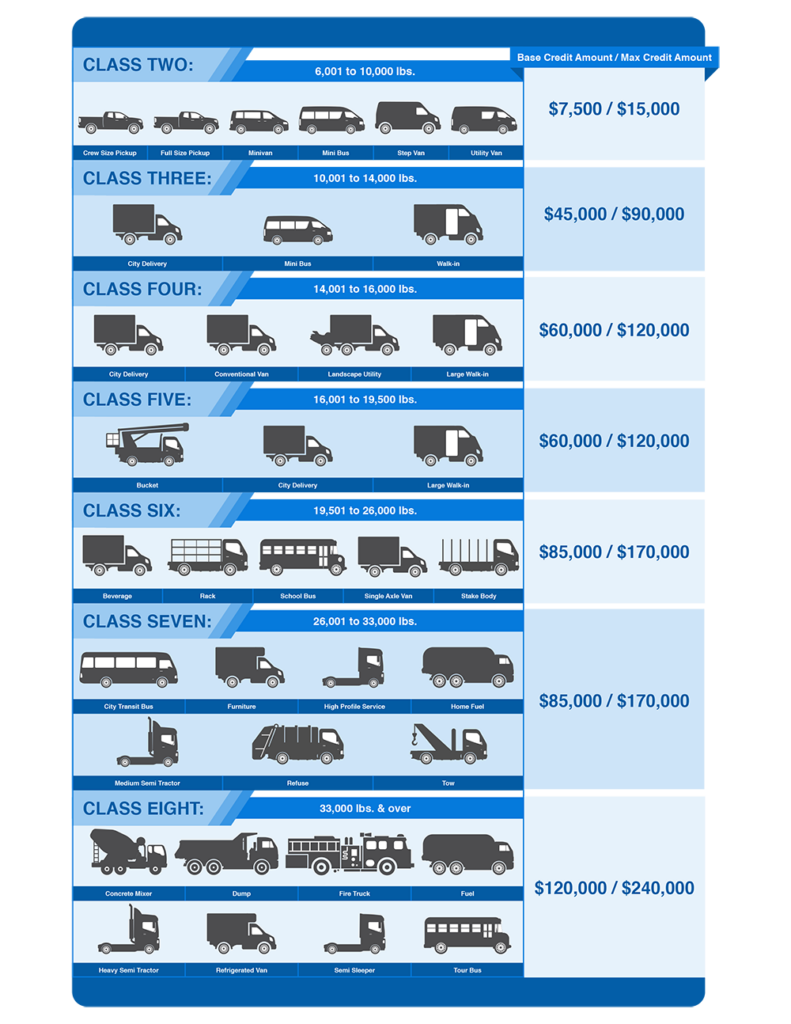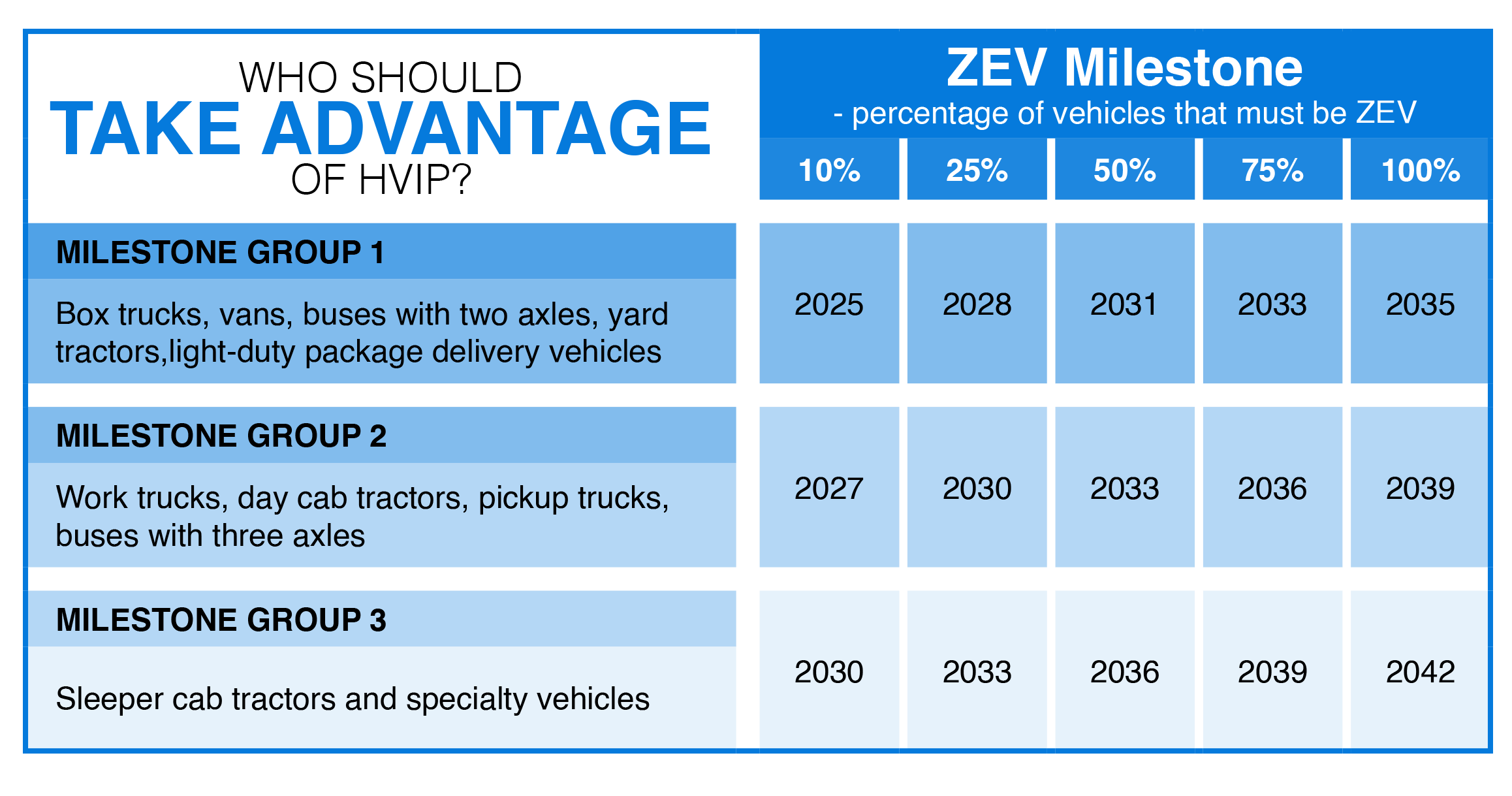Seize Massive EV Incentives Before Time Runs Out
California has set ambitious goals for commercial vehicle electrification through its Advanced Clean Fleets (ACF) initiative (read our quick take on it here). Most medium- and heavy-duty fleets operating in the state will need to comply with mandatory EV transitions starting in 2025—less than six months from now. Failure to meet the new ACF regulations could result in fines of up to $300,000 per non-compliant vehicle per month!
While the pricing on EV models is closer to reaching parity with internal combustion engine (ICE) vehicles than ever before, the California lawmakers do have some good news for fleet operators. Up to $240,000 in cold hard cash per vehicle is up for grabs if fleets can commit to buying EVs by the end of the year and in-fleet them in the following 18 months. But they need to be quick: this incentive will disappear for many operators starting in 2025.
Understanding HVIP and Its Benefits
The Hybrid and Zero-Emission Truck and Bus Voucher Incentive Project (HVIP) is a program developed by the California Air Resources Board (CARB) to promote the adoption of clean vehicles in commercial fleets. As of July 2024, the program still has $350 million in funding available for fleets to transition to EVs.
HVIP offers incentives for more than 150 different commercial EV models, from Class 2b delivery vans to Class 8 tractors and trash trucks. Specific funding is allocated for drayage, bus operators, and innovative small fleet applications.
Unlike other tax incentives or rebates, the HVIP incentive is applied at the point of sale, allowing dealers to pass the full rebate amount to the customer, significantly reducing the upfront purchase or lease cost.
However, determining eligibility and the amount a fleet might receive is complex. Incentives vary by vehicle type, fleet size, and application. Additionally, vehicles must be purchased from an HVIP-approved dealer, which involves an in-depth application process.

Who Should Take Advantage of HVIP?
ACF requirements phase in over time, starting in 2025. Fleets with certain vehicle types are most urgently required to transition a minimum percentage of their fleet to electric. With the current HVIP funds, there are ample opportunities to save money from day one, even for vehicle types not due for transition until 2027 or later.

How Much Could HVIP Be Worth to You?
If you operate a fleet in California, reach out to us for a no-cost HVIP/ACF fleet analysis. We’ll help you determine your eligibility for HVIP funding and identify the best vehicles for your transition.

